






 |
|||||||
 |
 |
 |
 |
 |
|||
 |
|||||||
|
Oliver Sayes 801a Readers of this site will know that I have a special fondness for the type 10 tube, and here we have what is probably an ultimate build on the 10, in this case using the 801a, a higher spec type 10 originally made for use as a transmitter. This is an Oliver Sayes amplifier, a work of audio art if ever there was one, custom built for a client who had been saving the Tango input and output transformers for just such an amp. A Sakuma-san like same-drives-same configuration, in this amp the 801a is driven by the 801a (or the 10Y). A dual chassis design, this amplifier features separate power and output chassis, with a bank of 81 rectifiers powering the output stage through an umbilical with Amphenol connectors. With a dozen top mounted oil caps, a compliment of Lundhal chokes under both chassis and some of the finest power and output transformers ever built, this amplifier represents a level of craftsmanship and design that is rarely found anywhere, and that, for me, is sort of a dream come true. I feel that the type 10 is one of tube audio’s all time superstars. With Thoriated Tungsten filaments and a fidelity that is off the charts good, the 10 tube is an end game player. The best of the NOS tubes were made back in the 1920s and 30s, and now Elrog has reintroduced the 801a in a new form, which so far I have not been lucky enough to experience. In this amplifier, the 801a is the power tube, making about 3 watts per channel. I’ve chosen a pair of globe 10 from the 1920’s to drive a pair of mid 1930’s ceramic base 801a transmitter tubes. This amplifier is all about resolution. This is a scanning electron microscope, and it sees everything on the recording. Its gaze is ruthless and unforgiving. On a good recording the space and depth and vibrancy are simply breathtaking. You are there. Every nuance and spatial cue is revealed and pushed to the front, almost like you are seeing behind the recording. With a live performance like Diana Krall’s A Case of You, the listener can feel the pounding weight of the piano keys, the slight intake of breath of the singer, the turn of her head, the many audience noises come to the front and the feeling is amazingly present. Similarly, Steve Hackett’s There Are Many Sides to the Night feels more real and live than it ever has before. But on a bad recording, the warts and farts and the air conditioner coming on in the back of the studio are all there to behold. This is the price of super-focused resolution; it rewards the good and exposes the bad. This amp has low input sensitivity, sort of like the Korneff 45 circuit, and as such in many settings it will benefit from some preamp gain to really bloom. In my case I tried two gain solutions; a really nice and super flexible tube preamp from Audible Illusions and an 01a/31/71a tube buffer on loan from Oliver. While both the Audible Illusions and the 01a buffer did lend some weight and thickness to the 801a’s somewhat lean presentation, ultimately I preferred a pure signal path using my passive Audio Music TVC (turned a good bit more toward wide open than normal) into 100 db/wm speakers. The space and openness of this amplifier are its strengths, and after a lot of back and forth I feel the purity of the signal makes this amp really come to life. However, with less efficient speakers, a preamp with some gain might be needed to fill out the sound and get to a high volume level. The 801a is a tube that many in the audio world have never heard, and that those in the know revere. In comparison to other tubes popular in the single ended world, the 801a offers enough power for most situations, similar to a 2A3, but with a level of extreme clarity that makes some of the others sound slow and muddled. This amplifier brings the 801a together in a same-drives-same configuration that would make Sakuma-san proud, and with the uncompromised parts selection and the massive isolated power supply, Oliver’s amplifier is certainly at the very top of the pile for me so far. Its been a real pleasure to have and experience such a bespoke piece of audio artwork, and I doubt very much that I will encounter another amplifier that outperforms the detail retrieval and supreme you-are-there resolution that this amp does so easily. Bravo Oliver! |
||||||||
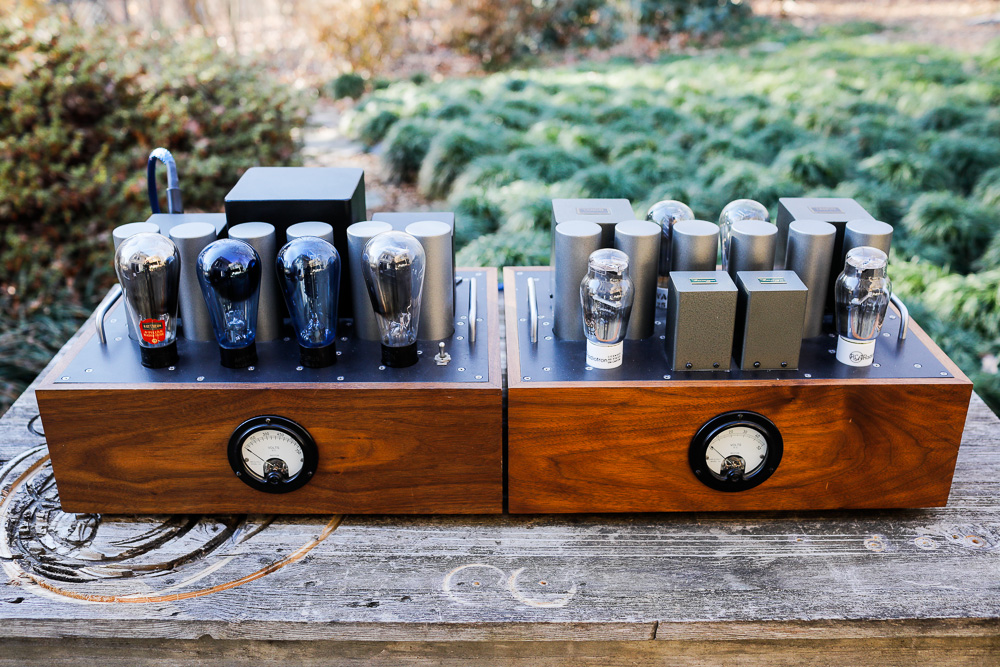
|
||||||||
|
An ultimate single ended build: the venerable 801a driven by the 10 globe in two chassis with Tango interstage and output transformers and Ludhal chokes throughout, all powered by a wall of 81 globes. I really have to wonder, is there is an obtainable point beyond this? |
||||||||
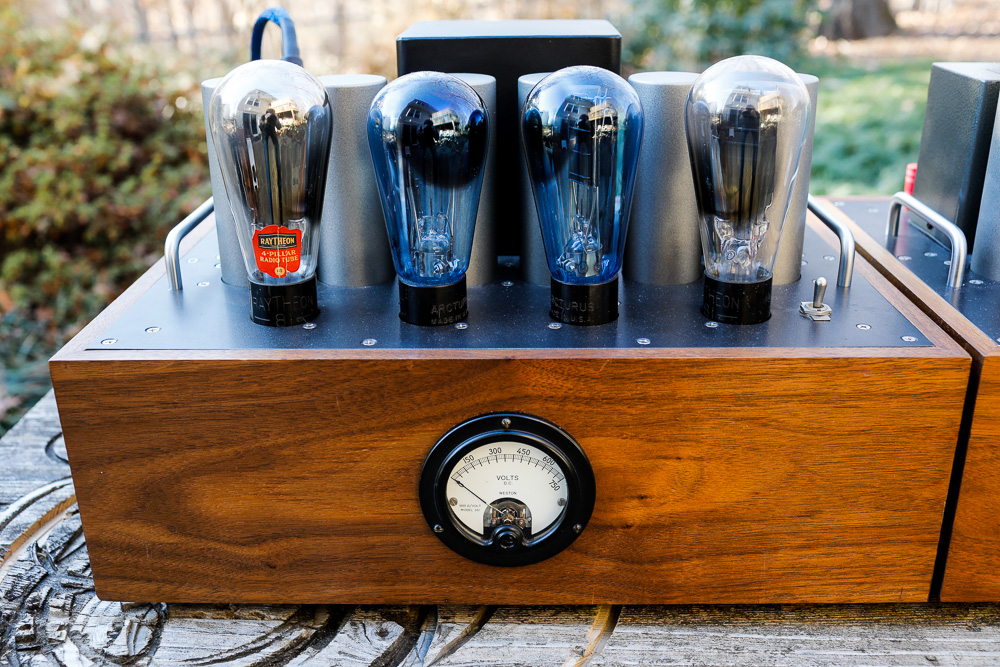
|
||||||||
|
The type 81 is a half wave rectifier, unlike almost ever rectifier tube you’ve ever seen, like the 80 or the 5U4, which are full wave rectifiers. This means it takes two to do the job. Here we have globe tubes from the early 30’s, two Raytheon box plates and two Arcturus blue glass. |
||||||||
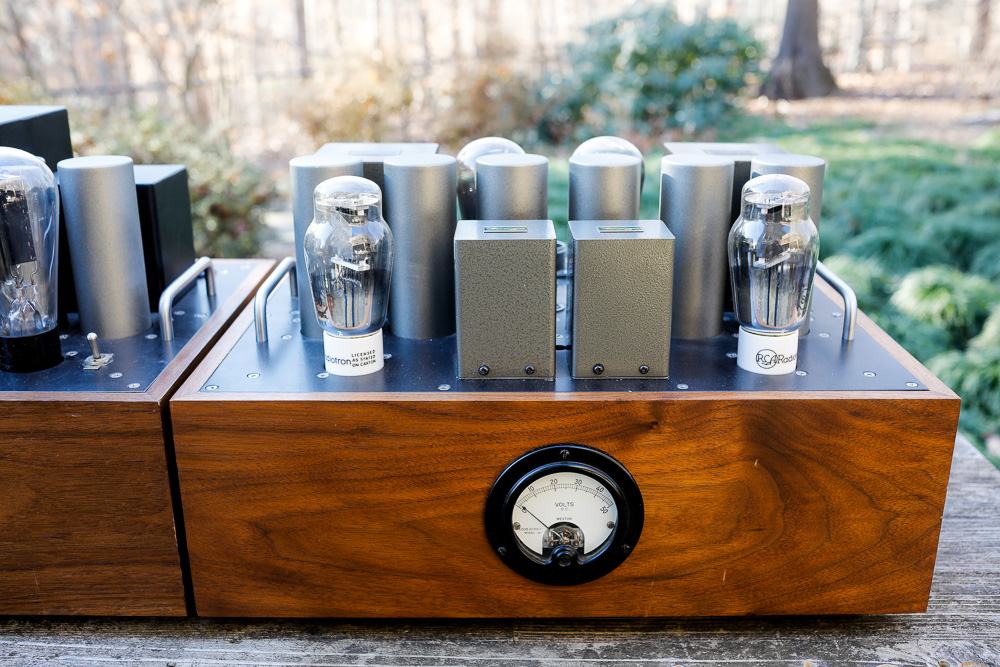
|
||||||||
|
Here are the 801a output tubes, in this case very early 1930’s ceramic base RCA Radiotrons. These are probably the best sounding 801a tubes ever made. These are making around 3 watts per channel in this amplifier. |
||||||||
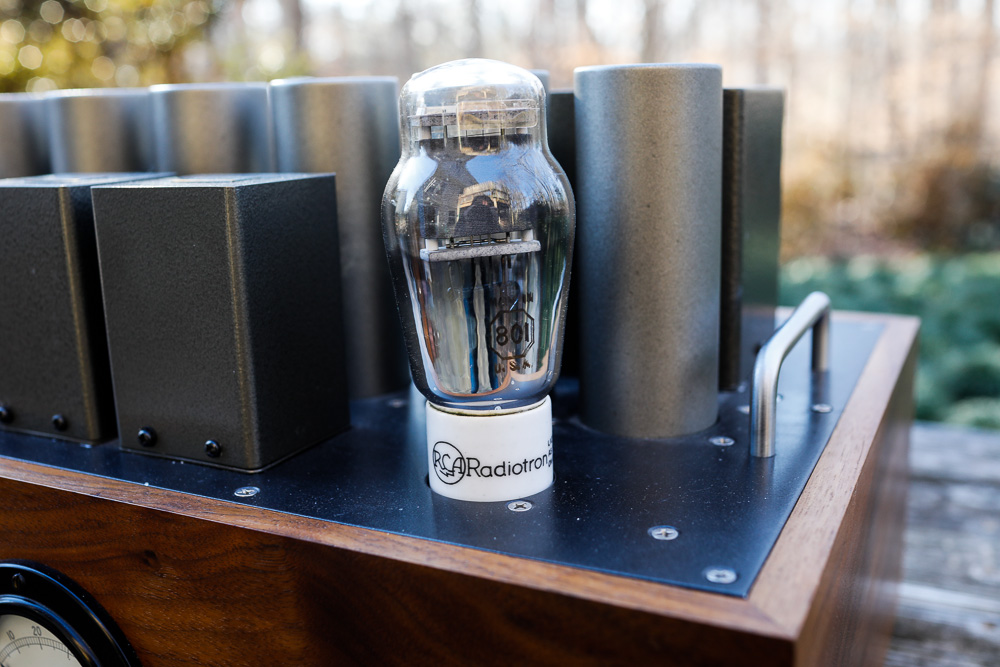
|
||||||||
|
The 801a was developed as a transmitter tube and was used in early radio sets as well as by the military. This ceramic base tube is the crème de la crème of the 801a world. |
||||||||
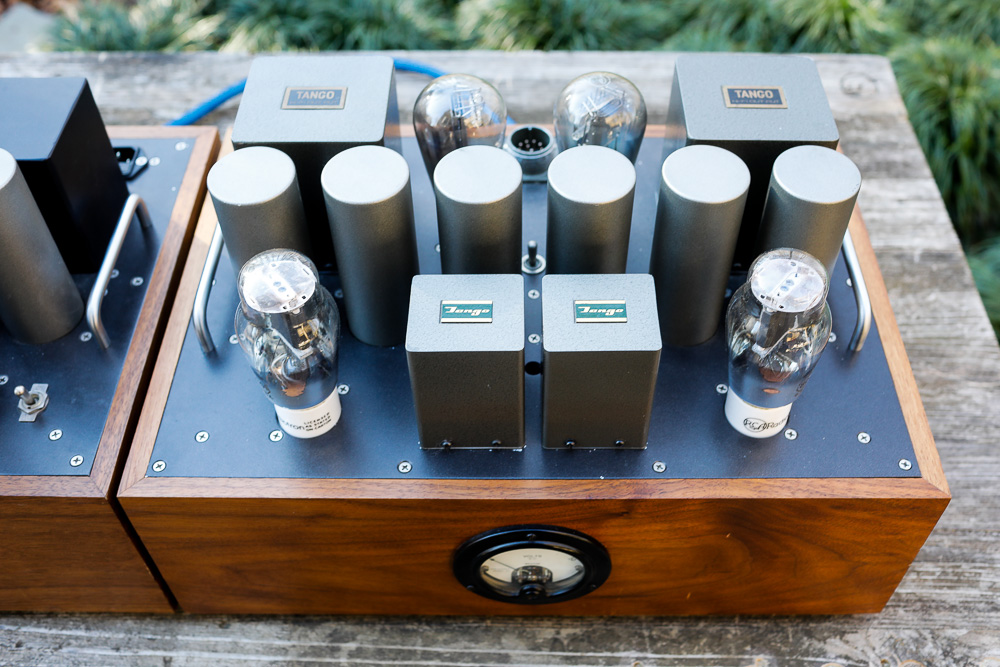
|
||||||||
|
I’ve never heard Tango transformers before in my own system. They do not disappoint! I remember the early days of my hifi journey looking at JE Labs and all of the amazing Tango rich amplifiers he presented to us. Well now I know. This is a transformer coupled amplifier, so there are transformers rather than caps in the signal path. The front pair of Tango are the interstage transformers, doing the duty that would normally be performed by capacitors under the chassis. The rear transformers are the output transformers. All super high quality and rare to see today. Like I’ve said before, my ideal is a modern amplifier built using the highest quality vintage parts. This is the pinnacle of that mantra. |
||||||||
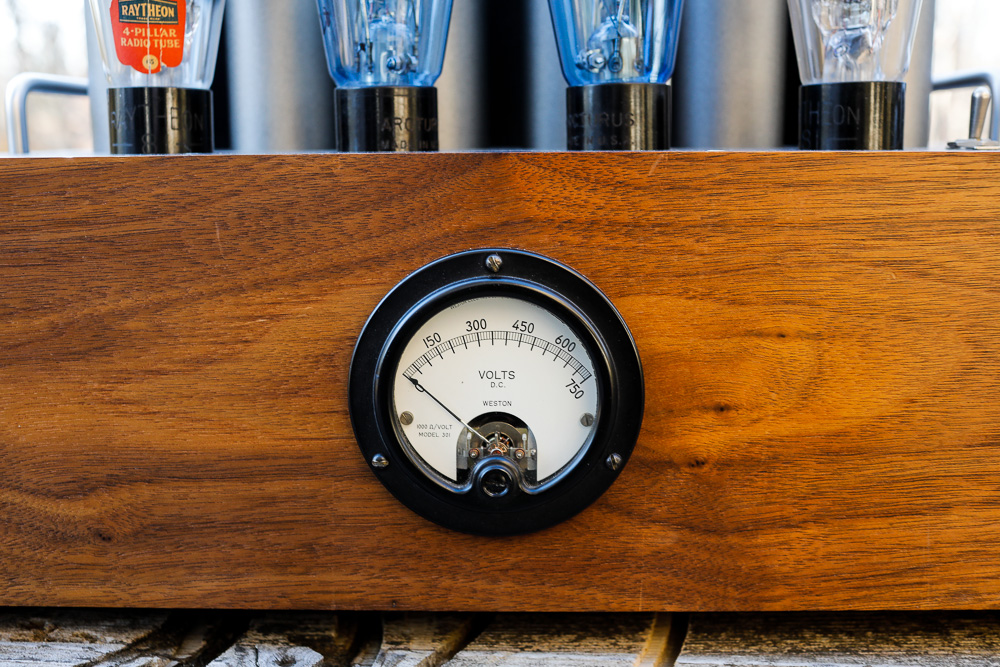
|
||||||||
|
Both chassis feature Weston meters to monitor tube performance. Oliver likes to use pretty wood in his builds, and here is a clear example. Lovely honey tones and deeply pronounced grain. I love wood. I remember a quote from Eric Clapton about how in the future world “made from wood” will be exotic. Here is the hifi definition of exotic. |
||||||||
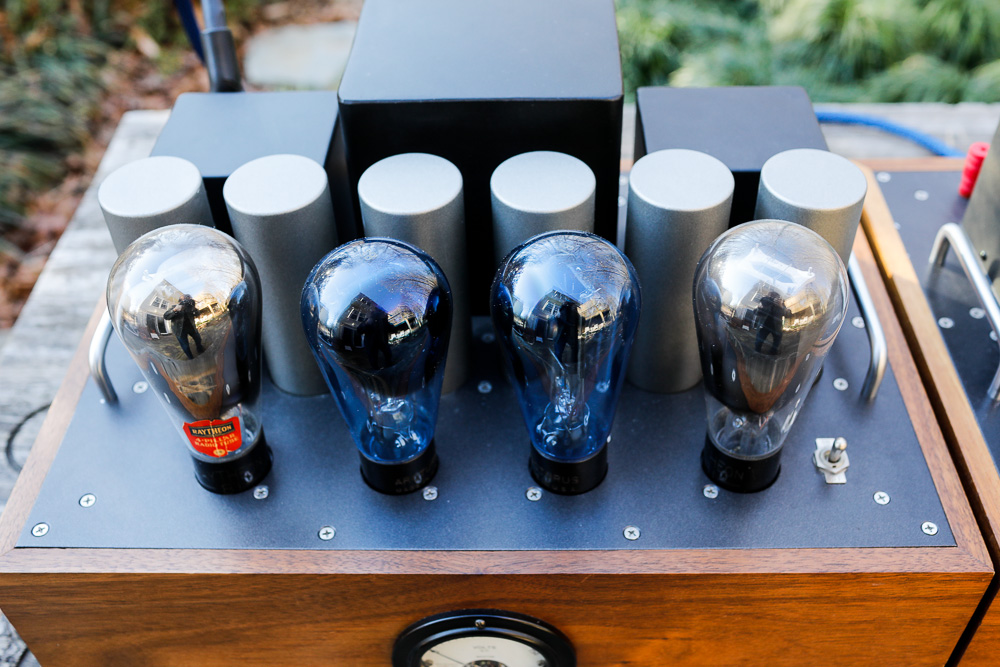
|
||||||||
|
A wall of 81 globe rectifiers is certainly an impressive sight! |
||||||||
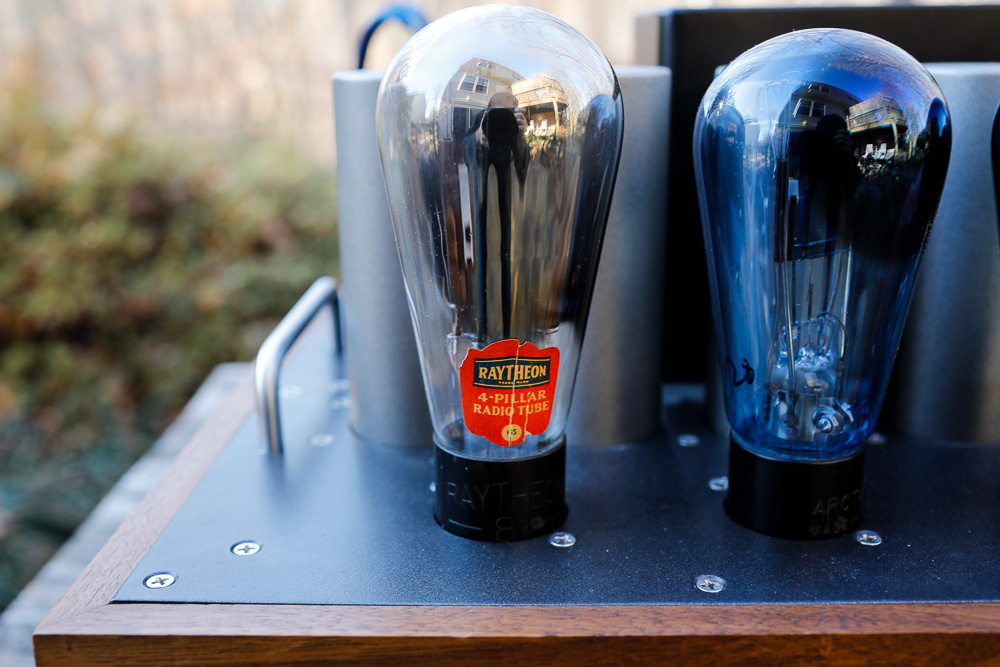
|
||||||||

|
||||||||
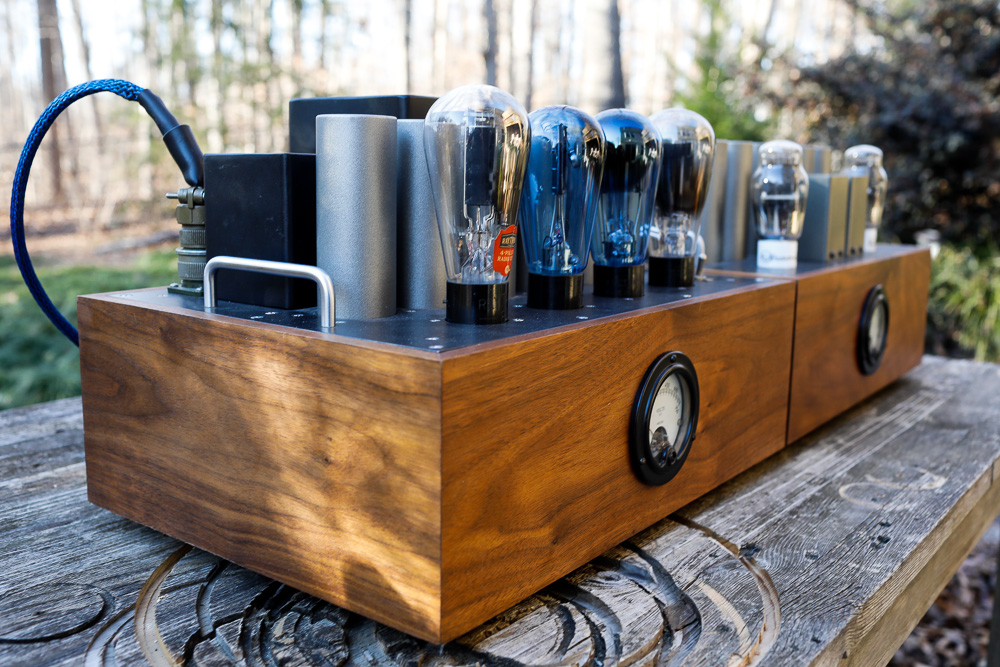
|
||||||||

|
||||||||
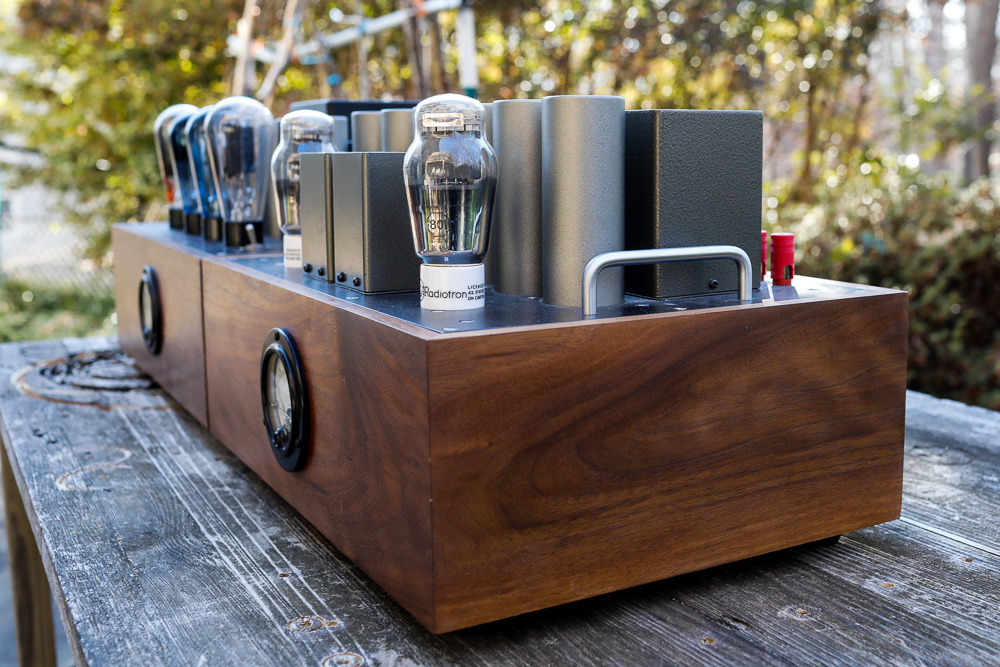
|
||||||||

|
||||||||
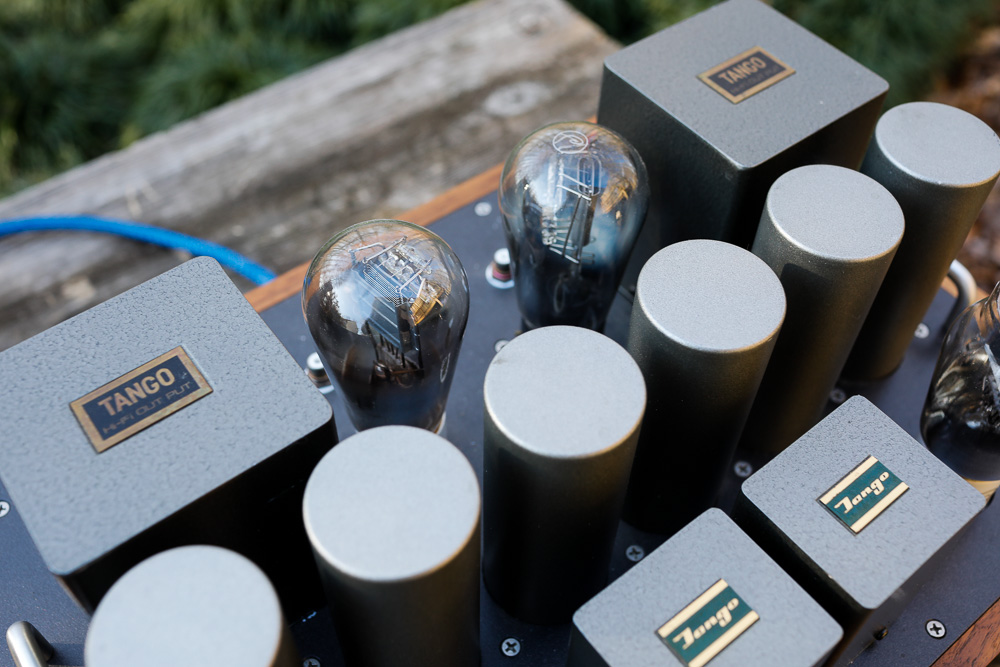
|
||||||||
|
This is a same-drives-same concept loosely based on Larry Moore’s famous 10 squared design. And being same drives same, it owes some of its pedigree to Sakuma-san who pioneered that ideal. In this case I’ve placed a pair of my coveted 10 globe tubes to drive the 801a outputs. Thoriated tungsten drivers pushing the signal to thoriated tungsten power tubes might be the most euphoric and emotionally charged tube configuration ever conceived. |
||||||||
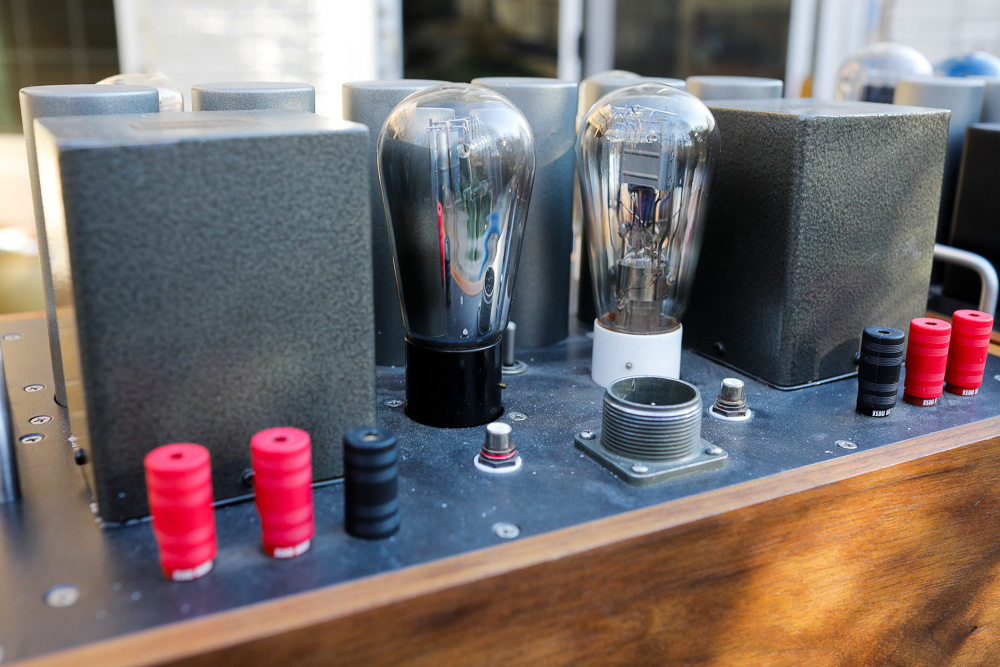
|
||||||||
|
The 10 globe is one of the best sounding vacuum tubes ever created, and as drivers here they are the penultimate. |
||||||||
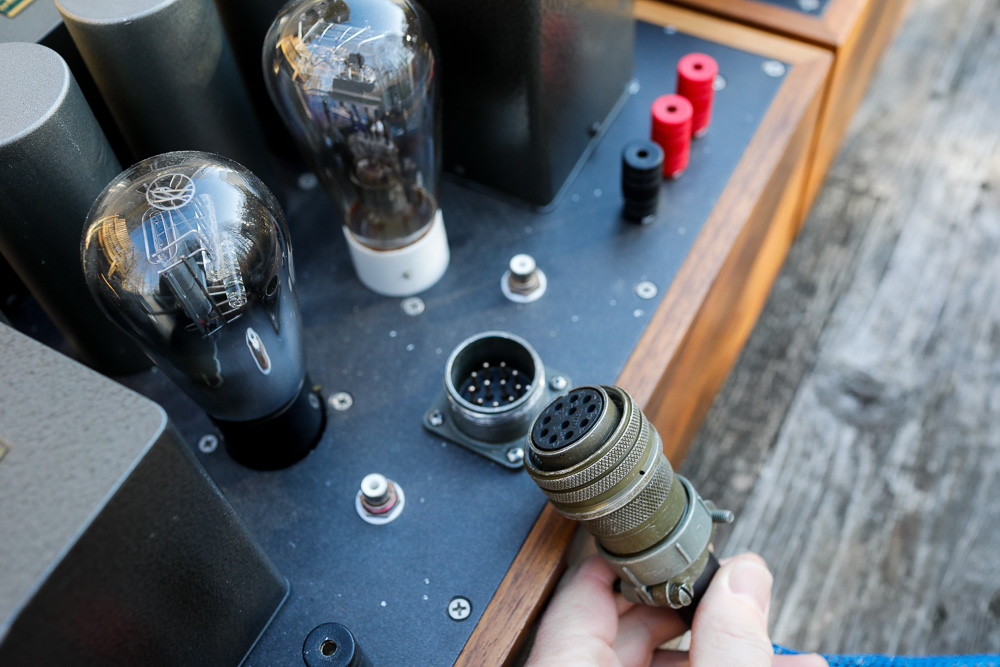
|
||||||||
|
The power chassis and output chassis are connected by an umbilical with NOS Amphenol connectors, just like the Radu Tarta 71a amp that I owned in the past. This ensures that none of the power noise and dirt makes it in to the signal path, an elaborate but crucial step that elevates this amplifier beyond the mortal realm. As we all know power supply is crucial to a tube amplifier and this one has every advantage built in. These heavy duty connectors cost the military a pretty penny when they were built, probably in the 1960’s. The Pentagon spares no expense and these are beyond robust. |
||||||||
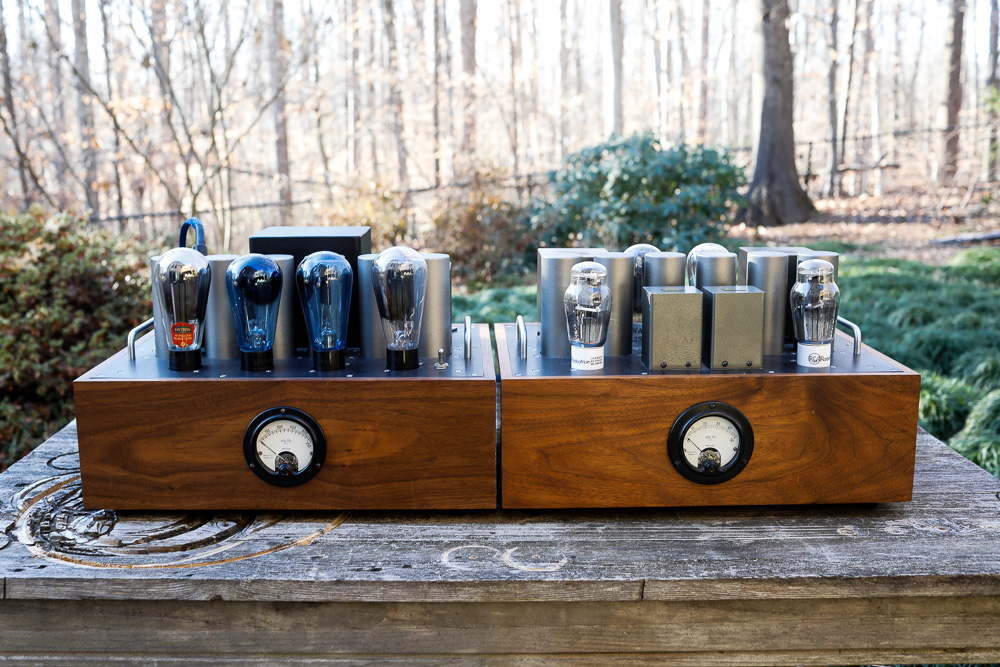
|
||||||||
|
Truly an ultimate build. I don't know where to go from here. If resolution is your goal, there is no “up”. |
||||||||
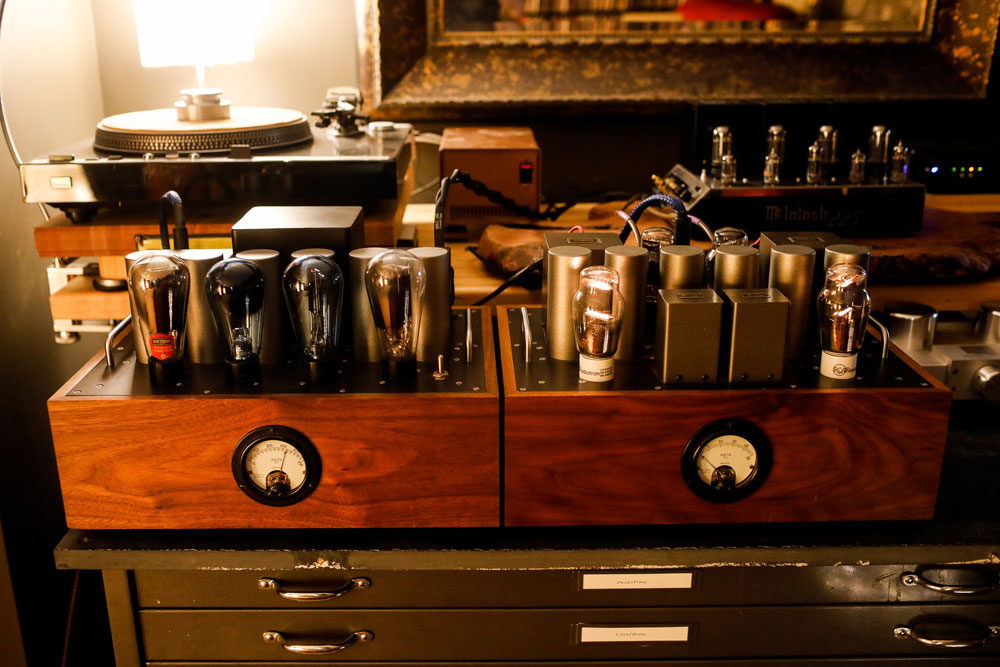
|
||||||||
|
The ultimate 801a in action! This amp takes up a lot of space at 34 inches wide. I have to say that it's impressive looks almost equal it’s impressive sound. Size wise each chassis dwarfs the McIntosh 225. |
||||||||
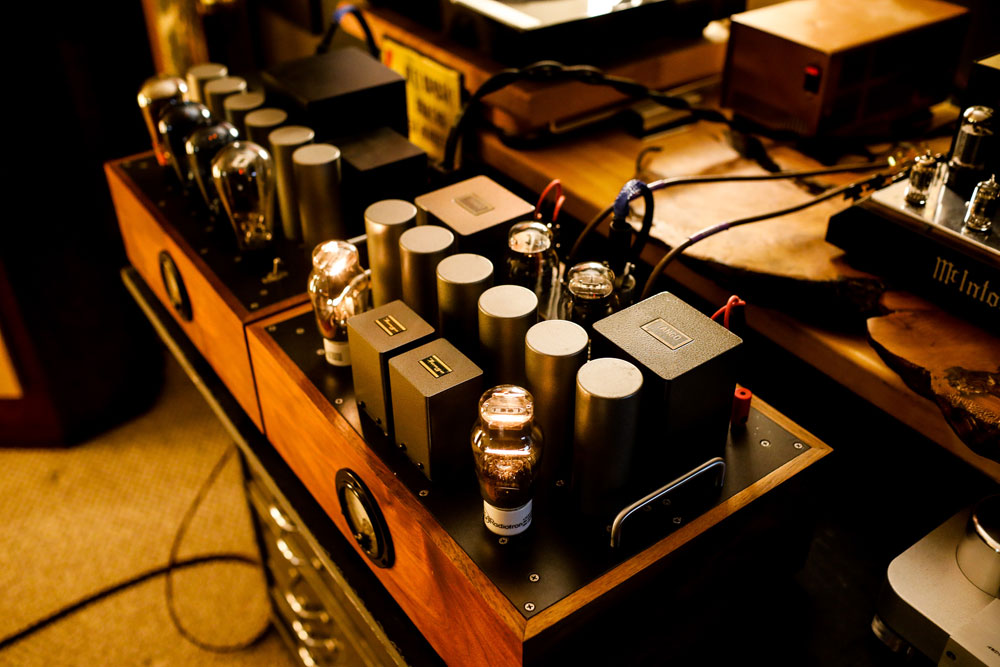
|
||||||||
|
The Thoriated Tungsten glow is a nice feature of any 10 amplifier. |
||||||||
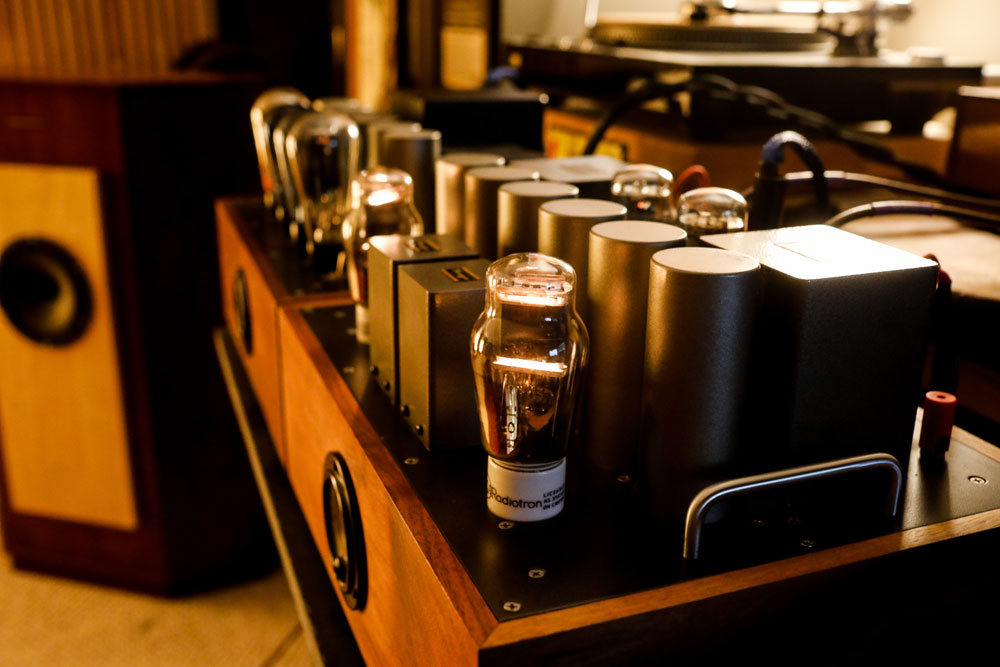
|
||||||||

|
||||||||
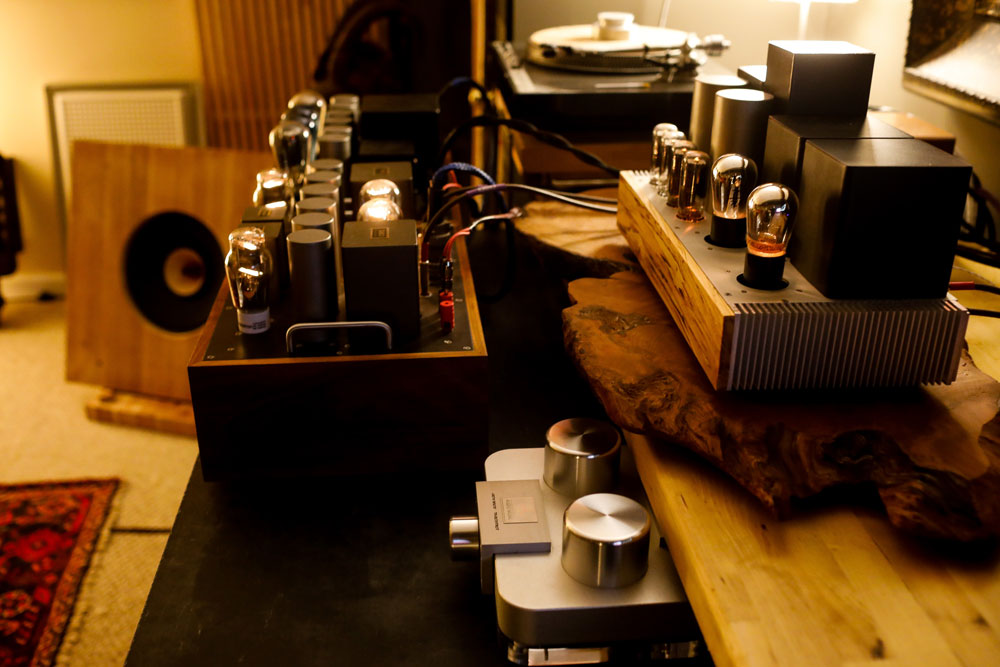
|
||||||||
|
Here with Oliver’s super cool 01a buffer stage adding a few decibels of warm triode gain. |
 |
|||||||
 |
 |
 |
 |
 |
|||
 |
|||||||
 |
|||||||